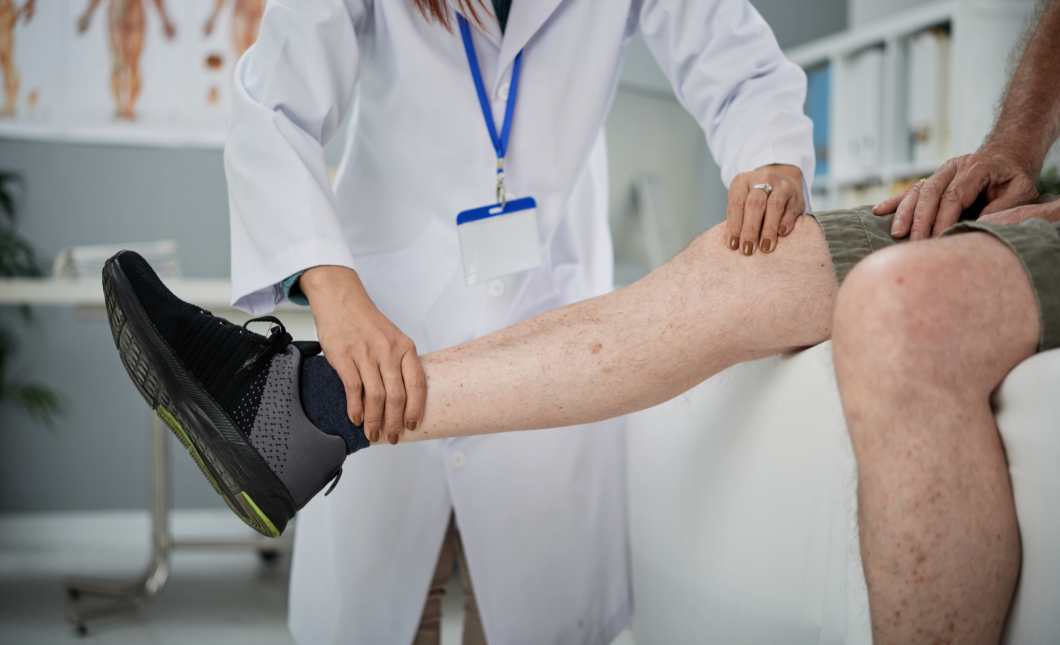The Silent Pressure in the Legs: A Case of Varicose Veins and a Natural Path to Healing
It started subtly for Mrs. Shalini, a 47-year-old teacher. By mid-afternoon, her legs felt heavy, almost as if gravity had grown stronger. She ignored it for months, blaming long school hours. But soon, thick, twisted blue veins began to trace up her calves. Some days, they ached; others, they itched. She began sleeping with pillows under her legs and avoiding sarees that showed her ankles. A vascular surgeon recommended laser ablation, but she hesitated—didn’t someone in her family have the same surgery and still face recurrence? That’s when she turned to homeopathy—searching for a treatment that worked from within.
Varicose veins are more than a cosmetic concern. These dilated, twisted veins result from weakened valves that allow blood to pool in the legs. While they can technically appear anywhere, they’re most commonly found in the lower limbs where blood has to fight gravity to return to the heart. Factors like prolonged standing, aging, pregnancy, obesity, family history, or hormonal changes in women all contribute to the condition. Over time, symptoms like dull aching, cramps, a dragging or bursting sensation, and swelling begin to appear. Some patients notice discolored skin, dryness, or the formation of ulcers and eczema around the ankles. Others experience a sudden burst of bleeding or develop complications like superficial thrombophlebitis or deep vein thrombosis, which may become medical emergencies.
Ignoring varicose veins can turn troublesome. Common complications include:
- Bleedingfrom ruptured surface veins
- Venous Ulcers, often near the ankles—slow-healing and painful
- Varicose Eczema, causing flaky, inflamed skin
- Superficial Thrombophlebitis, a painful clot near the skin
- DVT (Deep Vein Thrombosis), a dangerous clot deep in the vein, risking pulmonary embolism.
While conventional treatment options include compression stockings, sclerotherapy, laser surgery, or endovenous procedures, they may be invasive and do not guarantee the issue won’t return. Surgery might address the veins, but not always the underlying predisposition. Homeopathy, in contrast, offers a holistic and side-effect-free alternative, especially for mild to moderate cases. It doesn’t just relieve symptoms like heaviness, fatigue, swelling, or pain but strengthens the vein walls and improves valve function. The remedies work by enhancing blood flow and regulating circulatory imbalances that contribute to the condition. Most importantly, they address individual constitutional tendencies—be it poor venous tone, hormonal fluctuations, or inherited vascular weakness—offering long-term healing rather than temporary suppression.
For example, Hamamelis Virginiana is especially effective when tiredness and aching dominate the picture, often with visible knotty swellings and soreness even on light movement. Even bleeding varices are helped by it. If the condition appears during or worsens around menstruation, particularly in women, Pulsatilla Nigricans becomes a remedy of choice. Calcarea Fluor is a trusted tissue remedy when veins appear hard, knotty, and the overlying skin is cracked or dry. In obstinate, warm-weather-aggravated cases, Fluoric Acid offers deep healing, even for associated ulcers. When soreness dominates and patients describe a bruised feeling, Arnica Montana proves beneficial, especially post-exertion. Spider veins, those fine bluish-red superficial networks, often respond well to Carbo Veg, especially if the skin is cold and prone to itching in the evenings. Calcarea Carb helps when the veins are painless but prominent, often accompanied by cold feet and profuse foot sweating. Vipera Berus is excellent for unbearable bursting pains in the legs, worse when the legs hang down and better on elevation. And for varicose ulcers with purplish margins, sensitive to touch and discharging thin fluid, Lachesis Muta offers remarkable relief.
Homeopathy’s strength lies in its personalized approach. No one remedy suits all; instead, a skilled physician chooses based on your body’s story—its tendencies, triggers, and how the disease unfolds in your unique system. The aim is not just relief but true restoration of venous health. That said, severe complications like deep vein thrombosis or infected venous ulcers may require integrated or emergency care, as homeopathy acknowledges its own boundaries.
Through consistent treatment, patients like Mrs. Shalini report not only fewer visible veins but also lighter legs, deeper sleep, and renewed confidence in mobility. Most importantly, the dependency on surgical or repeated interventions fades. With time and patience, this gentle system gives lasting results—without scars, without relapse, and without compromising your body’s natural rhythm.
❓ Frequently Asked Questions
- Can homeopathy prevent surgery in varicose vein cases?
Yes, in mild to moderate cases, homeopathy can help avoid surgery entirely. In severe cases, it can still reduce complications and improve healing after conventional treatment. - How long does it take to see results with homeopathy?
Improvements often begin within weeks, but for long-standing conditions, a few months of regular treatmentmay be required. - Can homeopathy treat varicose ulcers?
Absolutely. Remedies like Lachesis, Fluoric Acid, and Hamamelisare known to promote healing of ulcers associated with varicose veins. - Are spider veins and varicose veins the same?
No. Spider veins are smaller, superficial, and usually painless, while varicose veins are larger, deeper, and symptomatic. - Is walking good for varicose veins?
Yes, moderate walking improves circulationand helps prevent worsening of the condition. Avoid standing for too long though.



